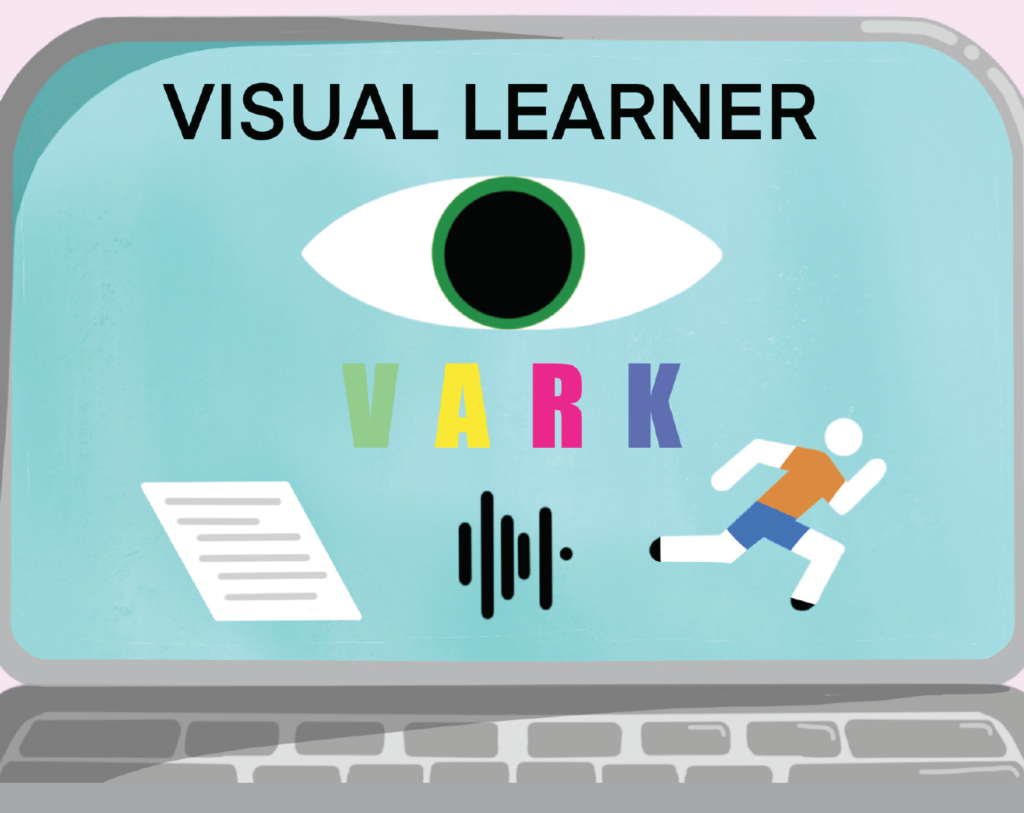
Graphic by Sesame Gaetsaloe/ The Choate News
Engrossed by the blinding display of your computer screen, you stare at the thirteen emboldened letters: visual learner. Many students have taken the Visual, Auditory, Reading & Writing, and Kinesthetic (VARK) learning style questionnaire, a short quiz that reveals their learning style.
Students are attracted to the quiz because it explains past academic mistakes and helps them guide their studying in the future. By aligning natural brain function to study habits, students can work more efficiently and effectively. While the VARK questionnaire may sound like a magical solution to improving your learning habits and earning higher grades, it actually limits a student’s curiosity and mental agility.
The VARK questionnaire identifies the learning style with which students are most compatible and defines strict study strategies that align with each learning style category, leading students to believe that they will learn only through a prescribed set of methods. However, categorizing students into different learning types generalizes their learning habits, preventing them from seeing a topic from a different perspective. The best learners take advantage of their strengths and adapt to their weaknesses, transcending any singular method of learning.
After taking the VARK questionnaire, I was categorized as a visual learner. Since then, I’ve made an effort to abide by my recommended visual learner study strategies, and, consequently, I’ve encountered difficulties concentrating during lectures and taking sufficient notes during class — two skills that VARK suggests are less valuable to me as a visual learner. Although I may not have always realized it in the classroom, the notion that I can learn only visually has subconsciously affected my study habits.
At Choate, I have found that there is a great distinction in teaching styles between the STEM and HPRSS departments; while STEM classes often consist of teacher-led explanations and note-taking, HPRSS classes frequently involve group discussions and visual aids. A simple explanation for this divide is that these two departments differ in the concepts they cover, so the methods they use to teach and the learners they appeal to must also be different.
However, teachers should aim to appeal to all VARK learning styles in order to encourage students to experiment with learning strategies outside of their comfort zones, and to ensure students of all learning styles have an equal opportunity to succeed in their classes. Teachers can accomplish this by diversifying the way they teach; for instance, a history course can still rely on group discussions, while also integrating data charts and podcasts into classes.
In this way, teachers can help students learn to become more confident moving between different learning styles in the long run. Learning a new topic or skill can be difficult, and if you constantly revert back to one learning method it becomes increasingly challenging to grasp a concept when it’s presented in an unfamiliar way. Choate’s job is not to create STEM students who are only good with numbers, or humanities buffs who can read 50 pages a day. Rather, we should foster a well-rounded and balanced student body in which students can alternate between different methods of learning, ultimately preparing students to be productive global citizens past graduation.


